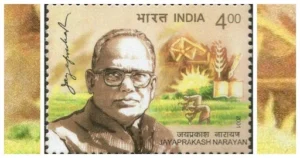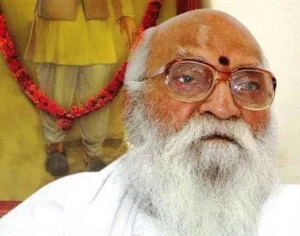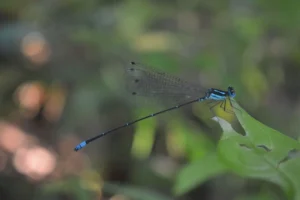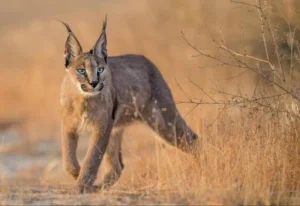UPSC GS 1
Jayaprakash Narayan
- News: Prime Minister Narendra Modi recently paid tributes to socialist stalwart and anti-Emergency movement icon Jayaprakash Narayan on his birth anniversary.
- Personal Background: Jayaprakash Narayan was born on October 11, 1902, in Sitab Diara, Bihar.
- Education and Early Activism:
-
- Left college to join the Non-Cooperation Movement.
- Later pursued studies at the University of California, Berkeley, where Karl Marx’s ideas deeply influenced him.
- Return to India and Role in the Freedom Struggle:
- Returned to India in 1929 and joined the freedom movement.
- Invited by Jawaharlal Nehru and inspired by a speech by Maulana Abul Kalam Azad, he became a part of the Indian National Congress.
- Played a key role in founding the Congress Socialist Party (CSP).
-

- Call for Sampoorna Kranti:
-
- His call for Sampoorna Kranti (Total Revolution) played a crucial role in rallying public opinion against Indira Gandhi’s government, ultimately leading to the formation of the first non-Congress government, the Janata Party, in 1977.
-
- Recognitions and Awards:
-
- Posthumously honored with the Bharat Ratna in 1999 for his contributions to social service.
- Received the Ramon Magsaysay Award for Public Service in 1965.
-
Read also: India-ASEAN Relations | Key Facts and Insights for UPSC
Nanaji Deshmukh
- News: PM Modi today paid tribute to Bharat Ratna Nanaji Deshmukh on his birth anniversary.
- Early Life: Nanaji Deshmukh was born in Maharashtra in 1916.
- Contribution to Education:
-
- Credited with establishing Saraswati Shishu Mandir (SSM), which operates a network of private schools in India, considered the educational arm of the RSS.
- Founded the first SSM in Gorakhpur in 1950 and established the Deendayal Research Institute (DRI) in Chitrakoot.
- Instrumental in the creation of India’s first rural university, Chitrakoot Gramodya Vishwavidyalaya.
-
- Role in JP Movement:
-
- Played a significant role in the JP movement of 1974, opposing the Emergency.
- A key figure in supporting Jayaprakash Narayan’s call for Total Revolution during the agitation.
-

- Contribution to Rural Development:
-
- Through the DRI, he implemented alternative rural development models based on traditional knowledge in Uttar Pradesh and Madhya Pradesh’s remote areas.
-
- Other Reform Movements:
-
- Actively involved in the Bhoodan Movement led by Vinoba Bhave.
- Spearheaded social restructuring in over 500 villages across Uttar Pradesh and Madhya Pradesh.
- Worked on reforms related to agriculture, cottage industries, rural health, and education.
-
- Awards and Recognition: Posthumously awarded the Bharat Ratna for his contributions.
UPSC GS 3
National Maritime Heritage Complex (NMHC)
- News: The Union Cabinet has approved the development of the National Maritime Heritage Complex (NMHC) at Lothal in Gujarat.
- Location and Overview:
-
- The National Maritime Heritage Complex (NMHC) will be situated in Lothal, Gujarat, with the Ministry of Ports, Shipping & Waterways (MoPSW) leading the initiative.
-
- Vision and Objective:
-
- The NMHC is in line with the Prime Minister’s goal of highlighting India’s 4,500-year-old maritime history.
-
- Employment Generation:
-
- The project is set to create around 22,000 jobs, consisting of 15,000 direct and 7,000 indirect employment opportunities.
-
- LightHouse Museum:
-
- The Directorate General of Lighthouses and Lightships (DGLL) will fund the construction of a LightHouse Museum, which is part of Phase 1B.
-
- Governing Council:
-
- The project will be supervised by a Governing Council chaired by the Minister of Ports, Shipping & Waterways, responsible for overseeing the project’s implementation, management, and operation.
-

- Beneficiaries:
-
- NMHC will benefit local communities, tourists, researchers, government bodies, educational institutions, cultural organizations, conservation groups, and businesses.
-
- Phases and Features:
- Phase 1A:
-
- Includes a museum with six galleries, featuring a large Indian Navy & Coast Guard gallery.
- Displays naval artifacts, a replica of the Lothal township, an aquatic gallery, and a jetty walkway.
-
- Phase 1B:
-
- Expands the complex with eight additional galleries, the world’s tallest Light House Museum, and the Bagicha complex.
- Provides parking for 1,500 cars, a food hall, and a medical center.
-
- Phase 2:
-
- Will feature Coastal State Pavilions developed by respective states and union territories.
- Includes a hospitality zone with a maritime-themed eco-resort and museotels.
- Features a recreation of the ancient Lothal City and a maritime institute with a hostel.
- Offers four theme-based parks: Maritime & Naval, Climate Change, Monuments, and Adventure & Amusement Parks.
-
MALABAR Exercise 2024
- News: This marks the 28th edition of the MALABAR maritime exercise.
-
- Originally launched in 1992 as a bilateral exercise between India and the United States, it later expanded with the inclusion of Japan and Australia, making it a multinational engagement.
- The exercise aligns with India’s vision of Security and Growth for All in the Region (SAGAR).
- It highlights India’s increasing cooperation with like-minded nations to bolster regional security.
-
- Duration:
-
- The exercise began on October 8, 2024, and will continue until October 18, 2024.
-
- Attendees:
-
- Participants include crew members and planning staff from the ships, aircraft, and Special Forces of the involved nations.
-
- Objective:
-
- The exercise aims to enhance mutual understanding, collaboration, and engagement to address shared maritime challenges.
-
- Key Features:
-
- The exercise is conducted in two phases—at the harbor and at sea.
- Key drills include live weapon firings, complex surface, anti-air, and anti-submarine warfare operations, along with joint maneuvers.
-
- Asset Participation:
-
- The exercise involves a wide range of assets, including destroyers, frigates, corvettes, fleet support ships, long-range maritime patrol aircraft, jet aircraft, helicopters, and submarines.
-
Agasthyamalai Bambootail
- News: A group of researchers from the state and outside has discovered a new species of damselfly called Agasthyamalai Bambootail from Manjadininnavila in Thiruvananthapuram district.

- Discovery of Agasthyamalai Bambootail:
-
- A newly discovered species of damselfly belonging to the bambootail group.
- Named for its long, cylindrical abdomen that resembles a bamboo stalk.
- Found in the Agasthyamalai landscape of the Western Ghats.
- The only other species in the same genus is the Malabar Bambootail (Melanoneura bilineata), native to the Coorg-Wayanad region of the Western Ghats.
-
- Distinctive Features:
-
- This genus can be distinguished from other bambootails by the absence of the anal bridge vein in their wings.
- Members of this genus have long black bodies with striking blue markings.
- The Agasthyamalai Bambootail differs from the Malabar Bambootail in its prothorax structure, anal appendages, and secondary genitalia.
-
- Key Facts about Damselflies:
-
- Damselflies belong to the order Odonata and are predatory aerial insects.
- They typically inhabit shallow, freshwater environments and are known for their graceful flight, slender bodies, and net-veined wings.
- Generally smaller and more delicate than dragonflies, damselflies also have weaker flight capabilities.
- Unlike dragonflies, damselflies’ eyes are always widely separated.
- Their vibrant colors are often stunning.
- The wingspan of damselflies varies, ranging from 18 mm (0.71 inches) to 19 cm (7.5 inches) in species like Megaloprepus caerulatus, a giant damselfly from tropical Central and South America.
- Damselfly larvae, often referred to as nymphs or naiads, are aquatic predators living in freshwater habitats.
-
Read also: Rice Fortification in India | Scheme, Benefits, and Concerns | UPSC
Caracal
- News: In India, caracals face habitat loss and are listed as critically endangered under Schedule I of the Indian Wildlife Act.
- General Characteristics:
-
- The caracal is a secretive, primarily nocturnal animal known for its agility and exceptional ability to catch birds mid-flight.
- In India, it is referred to as siya gosh, a Persian term meaning ‘black ear,’ in reference to its distinctively dark, tufted ears.
- For maternal dens, caracals often use abandoned porcupine burrows and rock crevices, though they may also be found with their young in areas of dense vegetation.
- While caracals can live in small groups, their shy and elusive nature makes them difficult to observe in the wild.
-
- Habitat:
-
- Caracals inhabit woodlands, savannahs, and scrub forests.
-

- Distribution:
-
- In India, the most suitable habitats are found in regions such as Kutch (Gujarat), the Malwa Plateau, the Aravalli hill range, and the Bundelkhand area of Rajasthan, Gujarat, and Madhya Pradesh.
- They are also present across numerous countries in Africa, the Middle East, and Central and South Asia.
-
- Threats:
-
- Major threats to caracals include large-scale hunting, illegal wildlife trade, and the loss of their natural habitats.
-
- Conservation Status:
-
- According to the IUCN, caracals are classified as a species of Least Concern.
- Under India’s Wildlife (Protection) Act of 1972, caracals are listed in Schedule I, granting them the highest level of protection.
-

